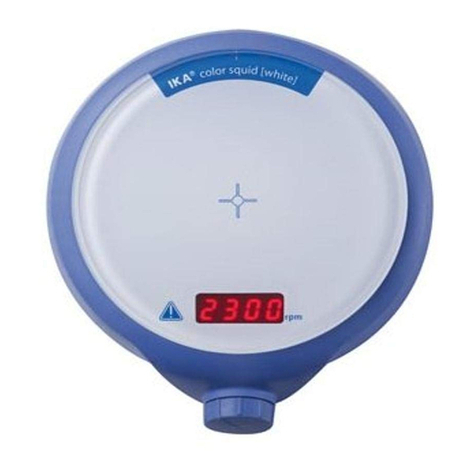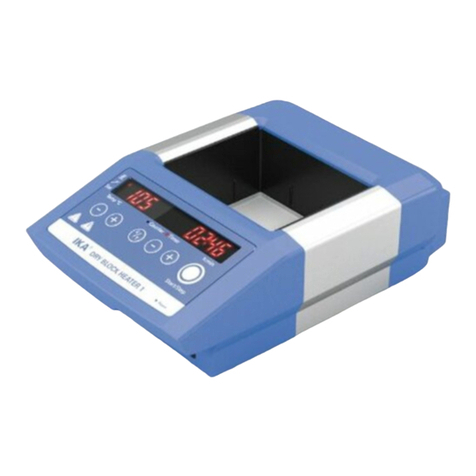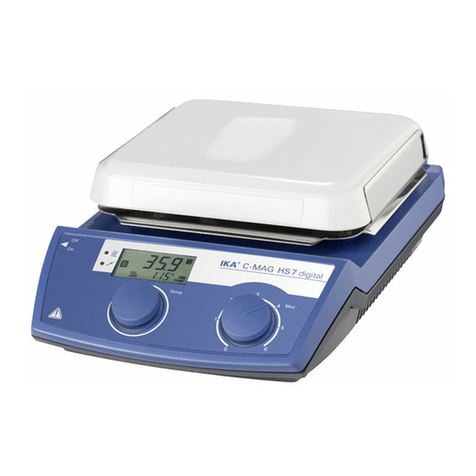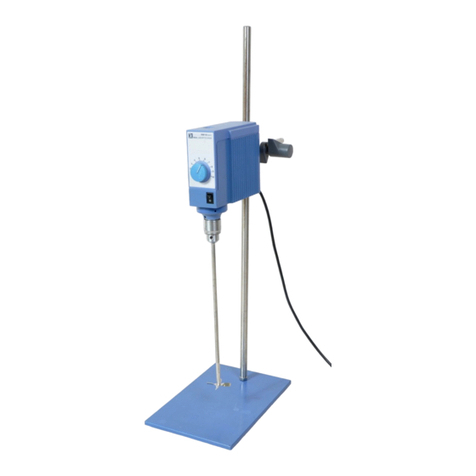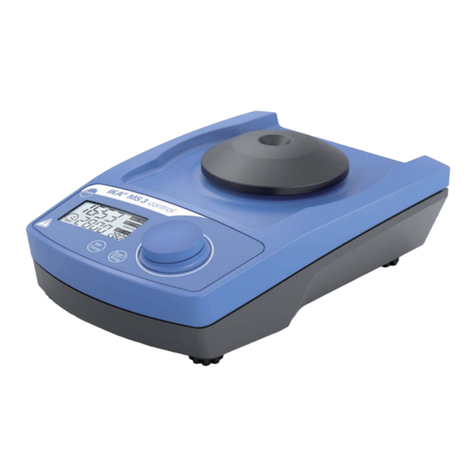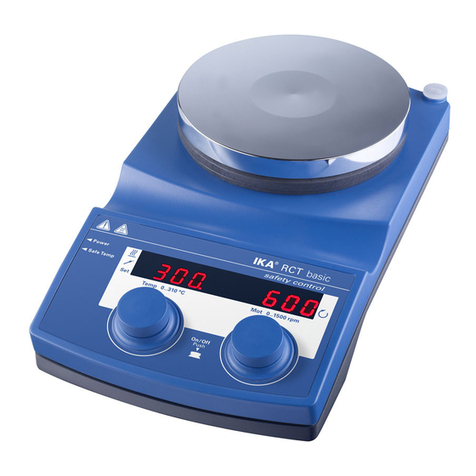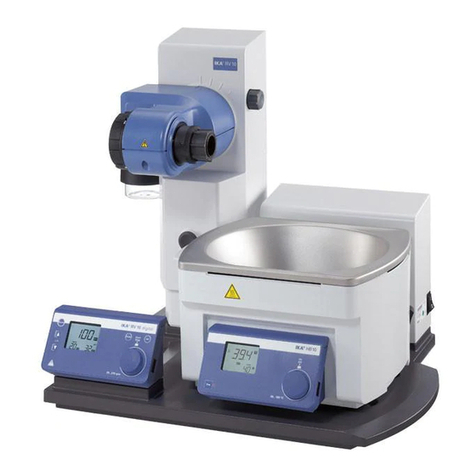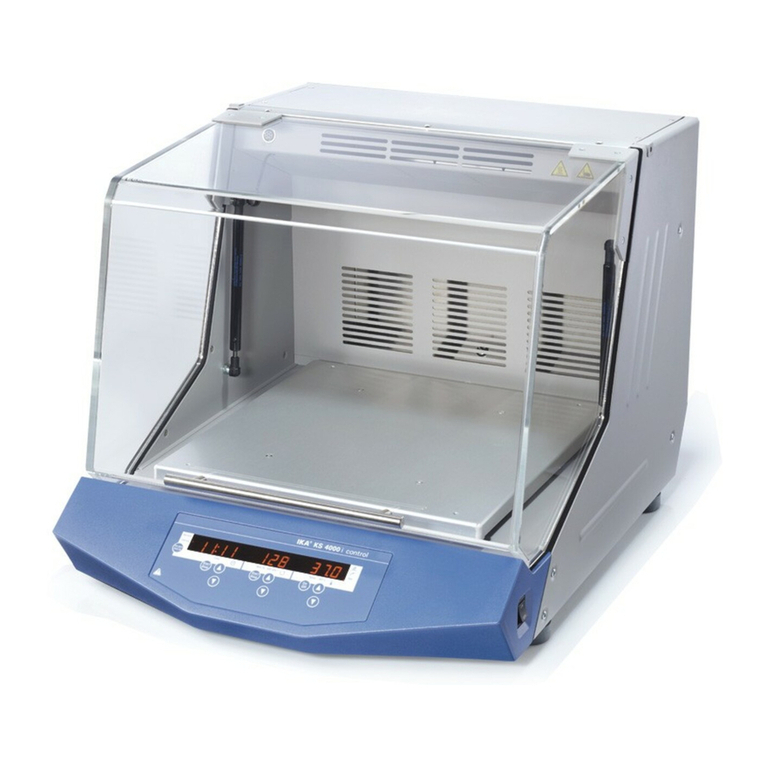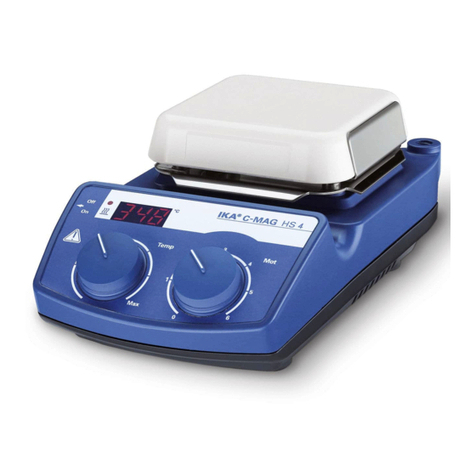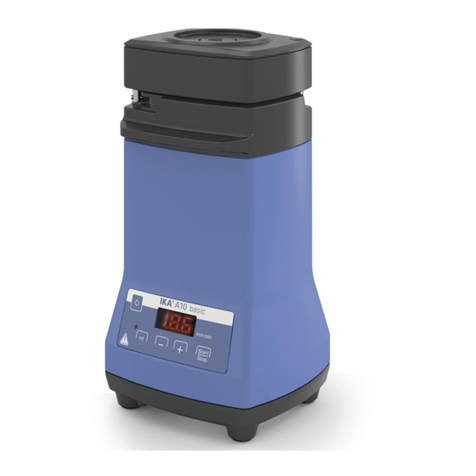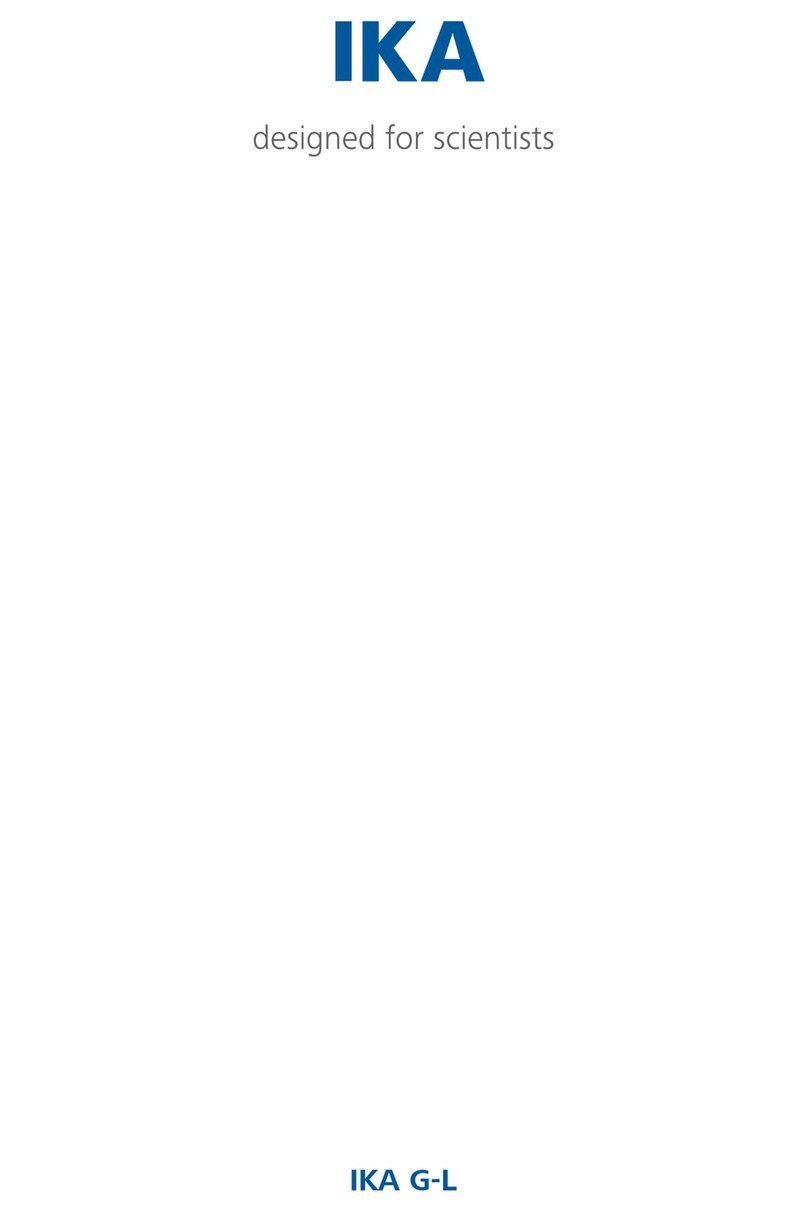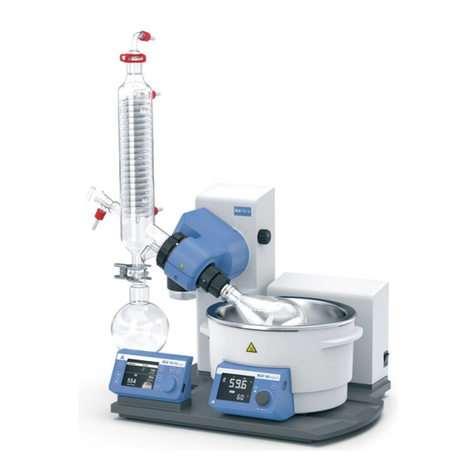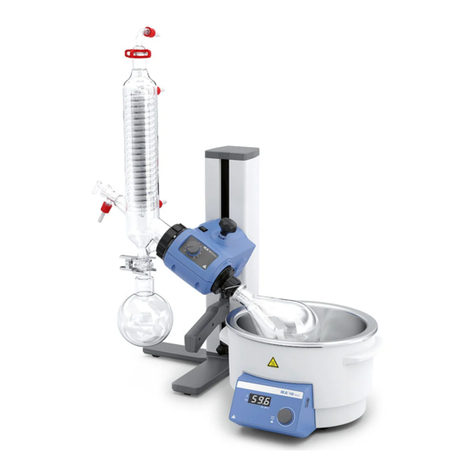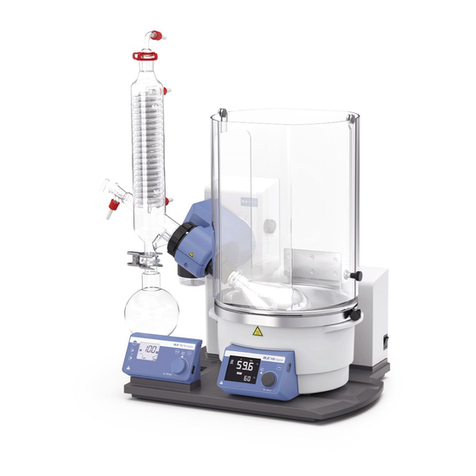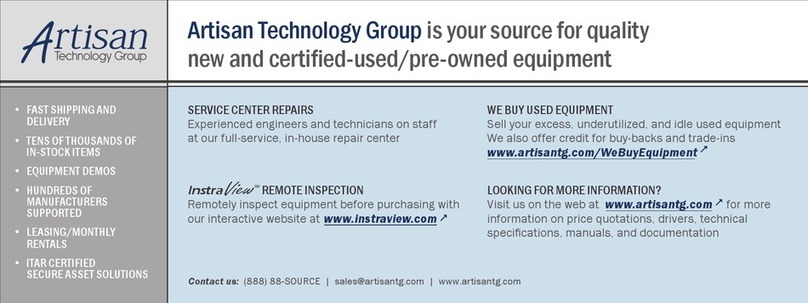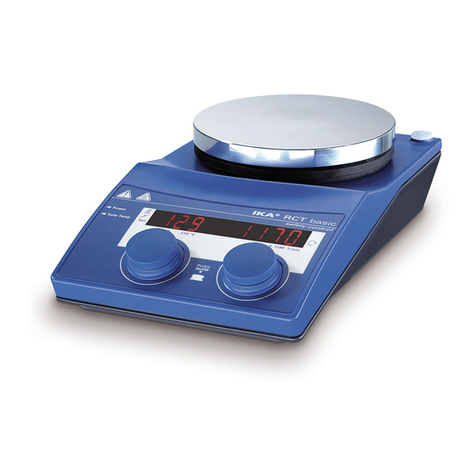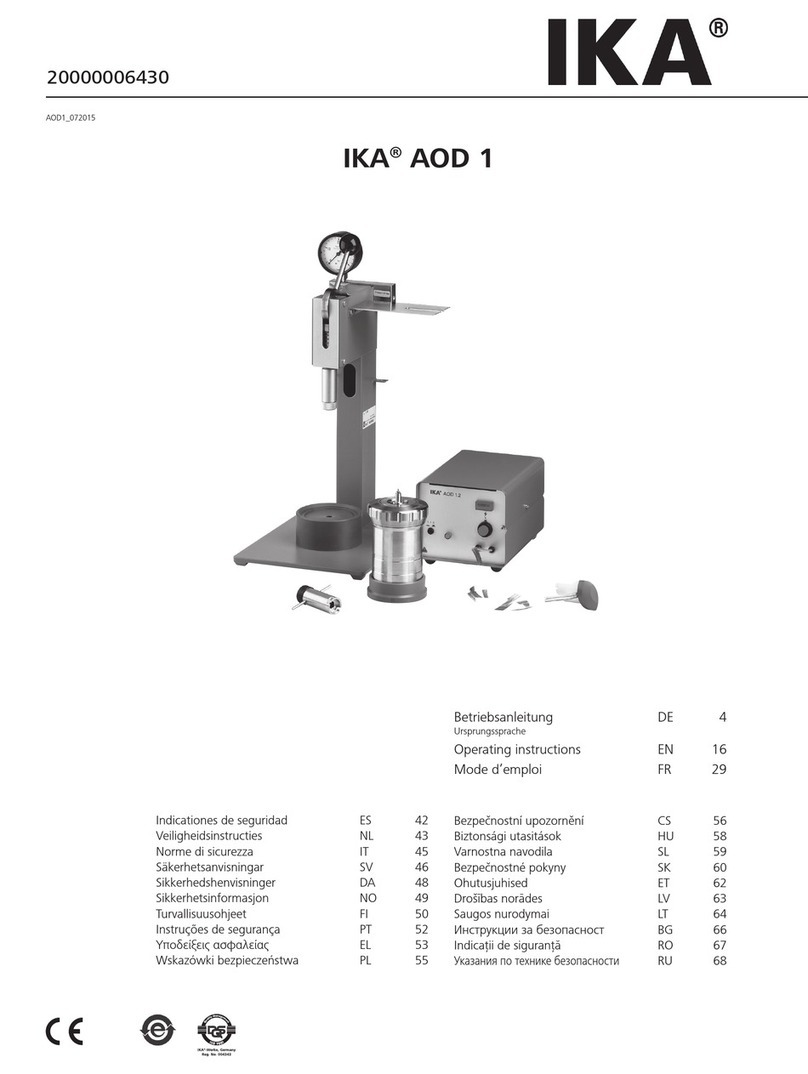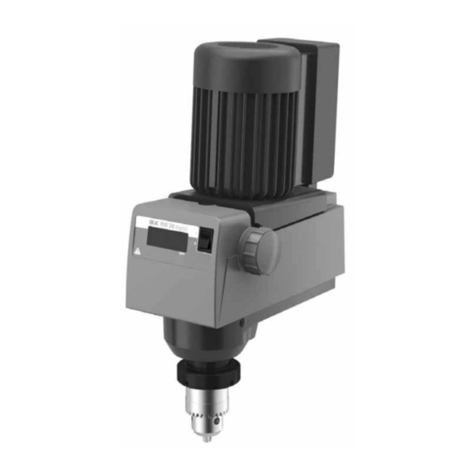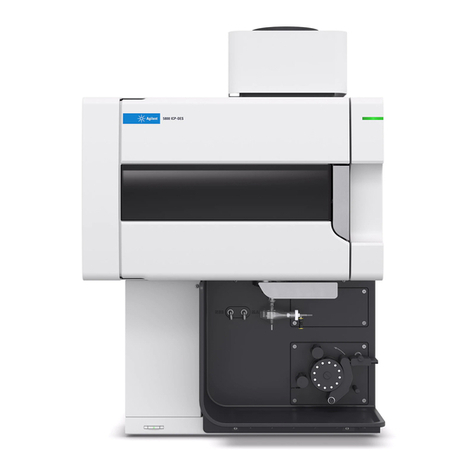5
Safety instructions
General information:
• Read the operating instructions completely before
starting up and follow the safety instructions�
• Keep the operating instructions in a place where it can be
accessed by everyone�
• Ensure that only trained staff work with the device�
• Follow the safety instructions, guidelines, occupational
health, safety and accident prevention regulations�
• Set up the device in a spacious area on an even, stable,
clean, non-slip, dry and fireproof surface�
• Do not operate the device in explosive atmospheres,
with
hazardous substances�
• Protect the device and accessories from bumping and im-
pacting�
• Check the device and accessories for damage before each
use� Do not use damaged components�
• Safe operation is only guaranteed with the accessories de-
scribed in the ”Accessories” section�
• The device must only be operated with the original mains
cord�
• The socket for the mains cord must be easily accessible�
• Socket must be earthed (protective ground contact)�
• The voltage stated on the type plate must correspond to
the mains voltage�
•
The device can only be disconnected from the mains supply
by pulling out the mains plug or the connector plug�
• Disconnect the mains plug before attaching or changing
any accessories�
• Disconnect the mains plug before cleaning, maintenance
or moving the device�
•
The device must only be opened by trained specialists,
even during repair� The device must be unplugged from
the power supply before opening� Live parts inside the
device may still be live for some time after unplugging
from the power supply�
Coverings or parts that can be re-
moved from the device must be put
back on the device again to ensure
safe operation, for example to keep foreign objects and
liquids, etc� from getting into the device�
• The device must only be used as prescribed and as de-
scribed in the operating instructions� This includes opera-
tion by instructed specialist personnel�
• When using critical or hazardous materials in your pro-
cesses, IKA®recommends to use additional appropriate
measures to ensure safety in the experiment� For example,
users can implement measures that inhibit fire or explo-
sions or comprehensive monitoring equipment�
• Process pathogenic material only in closed vessels under a
suitable fume hood� Please contact IKA®application sup-
port if you have any question�
If the mains switch is not within
reach when device is operating, an
EMERGENCY STOP switch that
can be easily accessed must be installed in the work area�
• A laboratory circulator heats/refrigerates and circulates flu-
id according to specified parameters� This involves hazards
due to high temperatures, fire and general hazards due to
the device of electrical energy� The user safety can not be
ensured simply with design requirements on the part of
the device� Further hazard sources may arise due to the
type of tempering fluid, e�g� by exceeding or undercutting
certain temperature thresholds or by the breakage of the
container and reaction with the carrier fluid� It is not pos-
sible to consider all eventualities� They remain largely sub-
ject to the judgment and responsibility of the operator� For
this reason, it may become necessary for user to take other
precautionary safety measures�
• Insucient ventilation may result in the formation of ex-
plosive mixtures� Only use the device in well ventilated
areas�
The safety circuit (safe temperature)
must be adjusted so that the maxi-
mum permissible temperature can-
not be exceeded even in the event of a fault� Check the
safe temperature circuit on a regular basis (see section
"Setting the safety temperature")�
• When device is used for external circulation, extra pre-
caution must be taken for hot/cold liquid leakage due to
damaged hose�
- Use suitable hoses for connection�
- Secure hoses and tubes against slippage and avoid kinks�
- Check hoses, tubes and bath at regular intervals for pos-
sible material fatigue (cracks/leaks)�
• Mains cable should not get in contact with hot parts and
fluids�
Do not start up the device if:
- It is damaged or leaking
- Cable (not only mains cable) is
damaged�
• Be careful when filling a hot bath�
At high operating temperature, the
temperature of housing parts, sur-
faces and tubes can exceed 70 ° C�
It is dangerous to touch the heater�
The temperature of the heater can
be very high�
CAUTION
NOTICE
WARNING
WARNING
CAUTION
CAUTION
